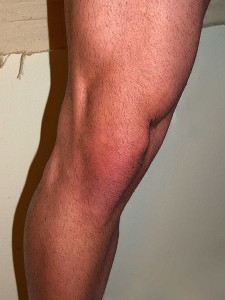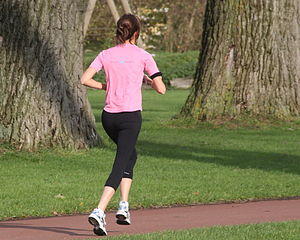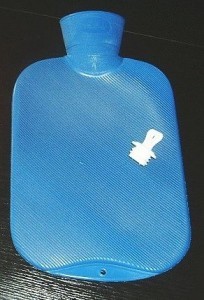How To Prevent And Ease Knee Osteoarthritis
Osteoarthritis is the most common type of arthritis, and mainly affects older people. It can start from as young as 30 years but most of us do not experience any symptoms until after the age of 50. Osteoarthritis is largely unpreventable. By the 65 years of age, 90% of people will have at least some evidence of osteoarthritis on ab x-ray even if they do not experience any symptoms. While you may not be able to save your joints from osteoarthritis entirely, you can minimize the risk, severity and age of onset of symptoms to some degree. Even if you already have osteoarthritis, there are many simple lifestyle measures that can take to reduce the severity of the symptoms.
What happens to the joints?
It is important to first understand what exactly occurs in the joints for osteoarthritis to develop. There are many different structures that make up a joint but basically it is made up of two ends of bones, cartilage that caps these bones, a joint lining and capsule. The cartilage is where most of the problem lies in osteoarthritis. Joint cartilage is constantly being replenished in life. It wears down with physical activity but its ability to regenerate rapidly ensures that there is always sufficient cartilage protecting the bones in the joint.
However, in osteoarthritis the cartilage becomes worn down since it is unable to regenerate fast enough to contend with the wear and tear. Eventually parts of the cartilage may break up into the joint spaces and eventually even the ends of the bones are eroded. Osteoarthritis is a chronic condition – it develops gradually over years and decades and usually lasts for life. Any extra strain on the joint worsens the condition. The large joints in the body are mainly affected in osteoarthritis compared to the small joints in rheumatoid arthritis. Read more on the differences between osteoarthritis and rheumatoid arthritis.
The knee is one of the commonly affected joints in osteoarthritis. It bears most of the body weight and has to deal with extra force during walking and standing. Almost every person will develop osteoarthritis later in life but certain people are at greater risk. Obesity plays a major role but so does any occupation where a joint is used excessively. People playing sports need to be careful about knee injuries as it is a risk factor for osteoarthritis but the same applies to any person who sustains a joint injury from any activities.
Rest The Knees Often
It is important that you do not ignore the symptoms of osteoarthritis. If you are experiencing pain, swelling and/or stiffness in the joint then you should stop what you are doing and rest the knee. Knowing your physical limits is crucial even if you do not have osteoarthritis. Although joints like the knee are very strong, it does have its limits even if you feel like you can go on standing, walking or running. You may not always feel the pain immediately. Sometimes it only starts after you complete the physical activity and when you are resting. Take note of just how much of physical activity does not trigger your knee symptoms. If you can walk 5 blocks or 20 minutes without pain then stay within this limit.
Regular Moderate Exercise
Although physical activity can strain the knees, no exercise can also be detrimental in osteoarthritis. Regular physical activity strengthens the muscles around the joint and helps maintain some degree of joint mobility. The key is finding the point of sufficient exercise without straining the knee. Infrequent exercise can actually be worse that not doing any exercise at all. Rather find a comfortable duration and intensity of exercise that you can do on a regular basis. Activities like swimming are ideal because it works out your muscles and joints without the impact. It does not mean that you have to be off your feet all the time. Brisk walking and leisurely cycling can also be good. But do not overdo it.
Consider Losing Weight
Your knees have to carry most of your body weight when you stand. It is almost all of the weight of your body if you exclude the legs and feet. Now multiply that force when you walk and run. It is even greater when you jump and land on your feet. But this force and joint strain is well understood. What is often forgotten is that excessive body weight also strains the joint. Losing weight if you are overweight or obese helps to reduce strain on the joint and minimize symptoms. Research has also shown that weight loss can also help to slow down erosion of the joint cartilage. Ultimately this means that it can slow down osteoarthritis and weight loss is therefore an essential part of treatment.
Heat And Cold Therapy
When we think of a chronic disease and chronic pain, we often think of strong prescription medication. However, simple measures can make a major difference in osteoarthritis. It can be as simple as heat and cold therapy. But the key is knowing what to use and when. Cold therapy (cryotherapy) is effective for injuries and inflammation. Pain and swelling, especially if you overdid a workout, requires cold therapy for 2 to 3 days. However, heat therapy (thermotherapy) is better for long term management and once the acute inflammation settles down. Together with over-the-counter (OTC) muscle and pain rubs, you can to a large degree manage your osteoarthritis without strong painkillers.
Mobility Aids Can Help
Do not hesitate to use mobility aids like a walking cane or even a crutch to take some of the strain off the joint. Some people find it awkward, others are embarrassed or feel that it “makes them old”. But you could be doing your knees a big favor. With a mobility aid you are taking some of the force off the affected knee and instead transferring it to the arms and torso. Without a walking aid you may be instead placing additional strain on your good knee and speed up the development of osteoarthritis in this knee. Speak to your physical therapist about the best mobility aid that may suit you and on how to use it.







